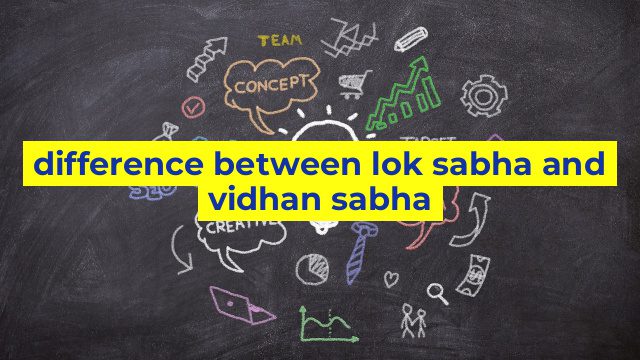Difference between Lok Sabha and Vidhan Sabha Explained
India is a democratic country that follows a federal system of government where power is distributed between the central and state governments. Lok Sabha and Vidhan Sabha are two important houses of the Parliament and Legislative Assembly respectively which play a significant role in the governance of the country. Although both are legislative bodies, there are some differences between them.
Representation & Jurisdiction
The Lok Sabha is the lower house of the Parliament which represents the people of India. Members of the Lok Sabha are directly elected by the voters of their respective constituencies. The total number of members in Lok Sabha is 545, out of which 543 are elected members and 2 are nominated by the President of India.
On the other hand, Vidhan Sabha is the lower house of the state legislature which represents the people of the respective states. Members of Vidhan Sabha are directly elected by the voters of their respective constituencies. The number of members in Vidhan Sabha varies from state to state depending on the population of the state concerned.
Functions & Powers
The Lok Sabha is responsible for making laws and legislative decisions for the entire country. It also performs certain functions like electing the Prime Minister of India, approving the budget, and impeaching the President. The Lok Sabha also has the power to remove the Council of Ministers by passing a vote of no-confidence. It exercises control over the Executive through various means such as questions, debates, adjournment motions, and no-confidence motions.
The Vidhan Sabha of a state is responsible for making laws and legislative decisions for the respective state. It performs functions like electing the Chief Minister of the state, approving the budget, and impeaching the Governor of the state. The Vidhan Sabha also has the power to remove the Council of Ministers by passing a vote of no-confidence. It exercises control over the Executive through various means such as questions, debates, adjournment motions, and no-confidence motions.
Conclusion
In conclusion, the Lok Sabha and Vidhan Sabha are two important houses of the Parliament and Legislative Assembly respectively. While the Lok Sabha represents the people of India and makes decisions for the entire country, the Vidhan Sabha represents the people of the respective state and makes decisions for that state. Both houses have certain common functions and powers but differ in their representation, jurisdiction, and decision-making process.
Table difference between lok sabha and vidhan sabha
| Parameter | Lok Sabha | Vidhan Sabha |
|---|---|---|
| Number of Members | 545 | Varies by State |
| Election Frequency | Once in 5 years | Once in 5 years |
| Eligibility Criteria for Members | Indian Citizen, 25 years old or above, not holding any other office of profit | Indian Citizen, 25 years old or above, not holding any other office of profit, and residing in the State where contesting elections |
| Powers and Functions | Makes laws at the national level, approves budgets, questions the government on its policies, and can initiate impeachment proceedings against the President or judges | Makes laws at the state level, approves budgets, questions the government on its policies, and can initiate impeachment proceedings against the Governor or judges of the High Court |
| Term Duration | 5 years | 5 years |
